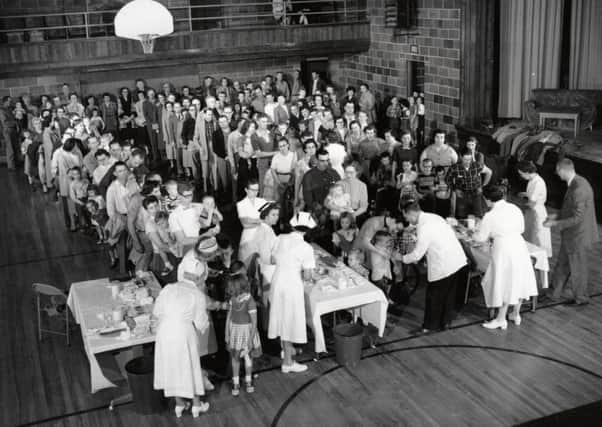Book review: The Vaccine Race, by Meredith Wadman


Making vaccines is difficult. Or more precisely, making safe vaccines is difficult. In 1942 around 330,000 US servicemen were exposed to the Hepatitis B virus after being given a yellow fever vaccine contaminated with donor plasma; nearly 150 of them subsequently died. Then in 1955 a polio vaccine with live (not attenuated) virus paralysed almost 200 people, and killed 10. So at the start of 1960s the race was on to create vaccines that were not only effective, but also safe.
Viruses grow and replicate inside cells. Therefore in order to create viral vaccines in bulk, ready supplies of cells are a prerequisite. Ideally, these cells should, to paraphrase the American anatomy professor Leonard Hayflick, be clean, safe, normal and noncancerous. This would necessarily rule out the famed HeLa cells (everlasting cancer cells taken from Henrietta Lacks, and described in Rebecca Skloot’s book The Immortal Life of Henrietta Lacks); but what cells to use instead?
Advertisement
Hide AdThis is the focus of Meredith Wadman’s excellent new book, The Vaccine Race: Science, Politics and the Human Costs of Defeating Disease. Hayflick’s research into cell lines, described in the book, was pivotal in the creation of a critical rubella vaccine, at a time when major epidemics of the illness caused terrible birth defects.
At the outset of Hayflick’s career in the late 1950s, there was growing awareness that cell cultures derived from animals might contain unrevealed viruses which could cause illness, or even trigger cancers. His goal was to find (and mass-produce) the safest human cells for vaccine production. This he eventually achieved by using lung cells from the aborted fetus of a Swedish woman, identified in the book only as Mrs X.
Her permission was never sought for this: one of many dubious ethical decisions which Wadman’s book explores. She also describes how orphans held in institutions and infants born to women in prison were used to test the experimental vaccines utilising Hayflick’s cells and then, perhaps most contentious of all, Hayflick’s decision in 1968 to take all of his cell cultures (catchily named WI-38s) with him to his new professorship at Stanford University, when in fact he had agreed to leave some behind at the Wistar Institute in Pennsylvania. This would lead to a long-running legal battle which almost ended Hayflick’s career – though ultimately it was also the catalyst for proper legislation regarding the ownership of cells and the process of vaccine creation.
Rubella, or German measles, was at that time one of the main targets for vaccine research. Major outbreaks were occurring every six years or so. The illness in children and adults is generally mild; but for women contracting rubella during early pregnancy it’s a different matter entirely. The virus targets growing cells at a specific phase of fetal development, causing Congenital Rubella: heart defects, hearing loss and eye defects, in a clinical syndrome first described by Dr Norman Gregg, an Australian ophthalmologist. In the US alone, 20,000 babies were born with Congenital Rubella during the 1964 outbreak, and in the aftermath there was a desperate need for safe, mass-produced vaccines before the next major outbreak, anticipated to be in 1970.
Wadman makes fascinating comparisons between rubella and the currently newsworthy Zika virus: both viruses causing mild illness in the mother, but major birth defects in the fetus. But her book really hits its stride is in part two, where it focuses on rubella, and horrifyingly, rabies – the case descriptions of children affected by this illness are heartbreaking. Despite the title, however, it’s a slow starter, possibly too detailed in places, and I must admit to glazing over at mentions of biotech shareholder dividends and US government legislation. Also, I would have liked more about the MMR scandal of the late 1990s and early 2000s, described elsewhere as “Perhaps the most damaging medical hoax of the last 100 years,” if only to show how much mass vaccination is taken for granted today.
Hayflick’s WI-38 cells – shared widely around the world – have helped to provide vaccines against (among others) polio, measles, rabies, chicken pox, and hepatitis A. To date billions of people have been vaccinated. The Vaccine Race takes in all of this, plus cell death, human ageing and the ethical dilemmas of owning living tissue, and is in the end an important story, well told. n
*Rob Ewing is an Edinburgh-based GP. His debut novel The Last of Us was published last year by the Borough Press, and he was shortlisted for the 2016 Costa Short Story Award.